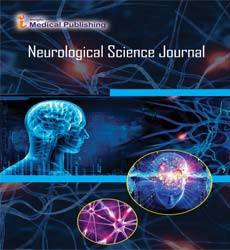Commentary: Neuroanatomy and its Composition
John Macy*
Department of Neurology, University of Bologna, Bologna, Italy
- *Corresponding Author:
- John Macy
Department of Neurology,
University of Bologna,
Bologna,
Italy,
E-mail: Macyj@gmail.it
Received Date: December 06, 2021; Accepted Date: December 20, 2021; Published Date: December 27, 2021
Citation: Macy J (2021) Commentary: Neuroanatomy and its Composition. Neurol. Sci, Vol.5 No.06:7.
About the Study
Neuroanatomy is the investigation of the structure and organization of the sensory system. As opposed to creatures with spiral balance, whose sensory system comprises of a conveyed organization of cells, creatures with reciprocal evenness have isolated, characterized sensory systems. Their Neuroanatomy is in this way better comprehended. In vertebrates, the sensory system is isolated into the inner design of the mind and spinal line (together called the focal sensory system, or CNS) and the courses of the nerves that associate with the remainder of the body (known as the fringe sensory system, or PNS). The delineation of distinct structures and regions of the sensory system has been basic in examining how it functions. For instance, quite a bit of what neuroscientists have taken in comes from seeing how harm or "injuries" to explicit cerebrum regions influences conduct or other neural capacities.
At the tissue level, the sensory system is made out of neurons, glial cells, and extracellular lattice. The two neurons and glial cells come in many kinds (see, for instance, the sensory system segment of the rundown of particular cell types in the grown-up human body). Neurons are the data handling cells of the sensory system: they sense our current circumstance, speak with one another through electrical signs and synthetics called synapses which by and large demonstration across neurotransmitters (close contacts between two neurons, or between a neuron and a muscle cell; note likewise extra synaptic impacts are conceivable, just as arrival of synapses into the neural extracellular space), and produce our recollections, musings, and developments. Glial cells keep up with homeostasis, produce myelin (oligodendrocytes), and offer help and security for the mind's neurons. Some glial cells (astrocytes) can even spread intercellular calcium waves over significant distances in light of incitement, and delivery gliotransmitters because of changes in calcium fixation. Scars in the cerebrum to a great extent contain astrocytes. The extracellular network likewise offers help on the atomic level for the synapses', vehiculating substances to and from the veins.
At the organ level, the sensory system is made out of mind areas, for example, the hippocampus in warm blooded animals or the mushroom groups of the natural product fly. These districts are frequently measured and serve a specific job inside the overall fundamental pathways of the sensory system. For instance, the hippocampus is basic for shaping recollections regarding numerous other cerebral locales. The fringe sensory system likewise contains afferent or efferent nerves, which are heaps of strands that begin from the cerebrum and spinal string, or from tactile or engine kinds of fringe ganglia, and branch over and again to innervate all aspects of the body. Nerves are made essentially of the axons or dendrites of neurons (axons if there should be an occurrence of efferent engine filaments, and dendrites in the event of afferent tactile strands of the nerves), alongside an assortment of films that fold over and isolate them into nerve fascicles. The vertebrate sensory system is partitioned into the focal and fringe sensory systems.
The focal sensory system (CNS) comprises of the mind, retina, and spinal line, while the fringe sensory system (PNS) is comprised of the multitude of nerves and ganglia (bundles of fringe neurons) outside of the CNS that interface it to the remainder of the body. The PNS is additionally partitioned into the physical and autonomic sensory systems. The physical sensory system is comprised of "afferent" neurons, which bring tangible data from the substantial (body) receptors to the CNS, and "efferent" neurons, which do engine guidelines to the intentional muscles of the body.
The autonomic sensory system can work with or without the control of the CNS (that is the reason it's called 'independent'), and furthermore has two regions, called parasympathetic, which are significant for sending orders to the body's essential inward organs, along these lines controlling capacities like heartbeat, breathing, assimilation, and salivation. Autonomic nerves, in contrast to physical nerves, contain just efferent strands. Tangible signs coming from the viscera course into the CNS through the physical tactile nerves (e.g., instinctive agony), or through some specific cranial nerves (e.g., chemo sensitive or repairman signals).
Open Access Journals
- Aquaculture & Veterinary Science
- Chemistry & Chemical Sciences
- Clinical Sciences
- Engineering
- General Science
- Genetics & Molecular Biology
- Health Care & Nursing
- Immunology & Microbiology
- Materials Science
- Mathematics & Physics
- Medical Sciences
- Neurology & Psychiatry
- Oncology & Cancer Science
- Pharmaceutical Sciences
